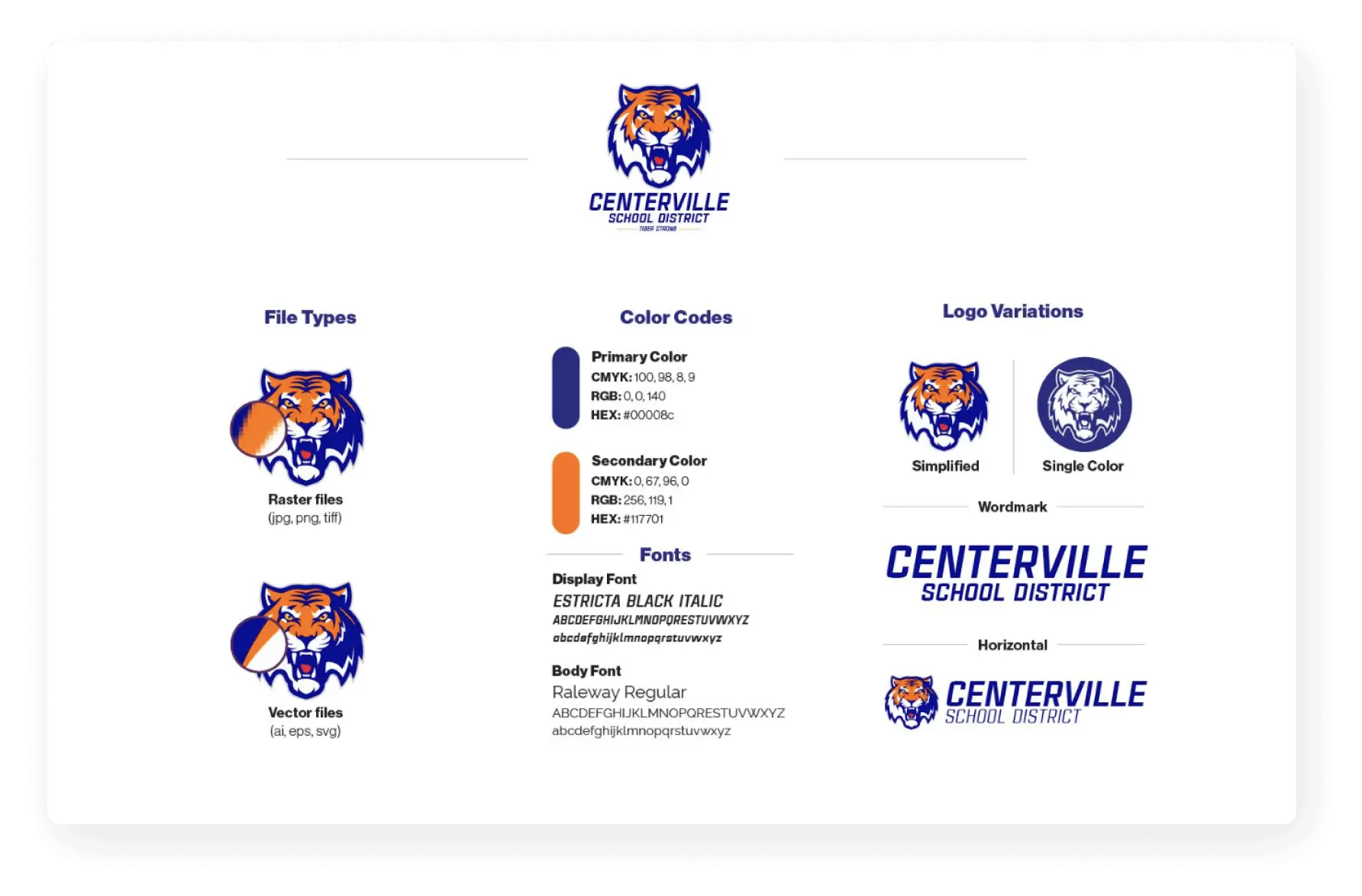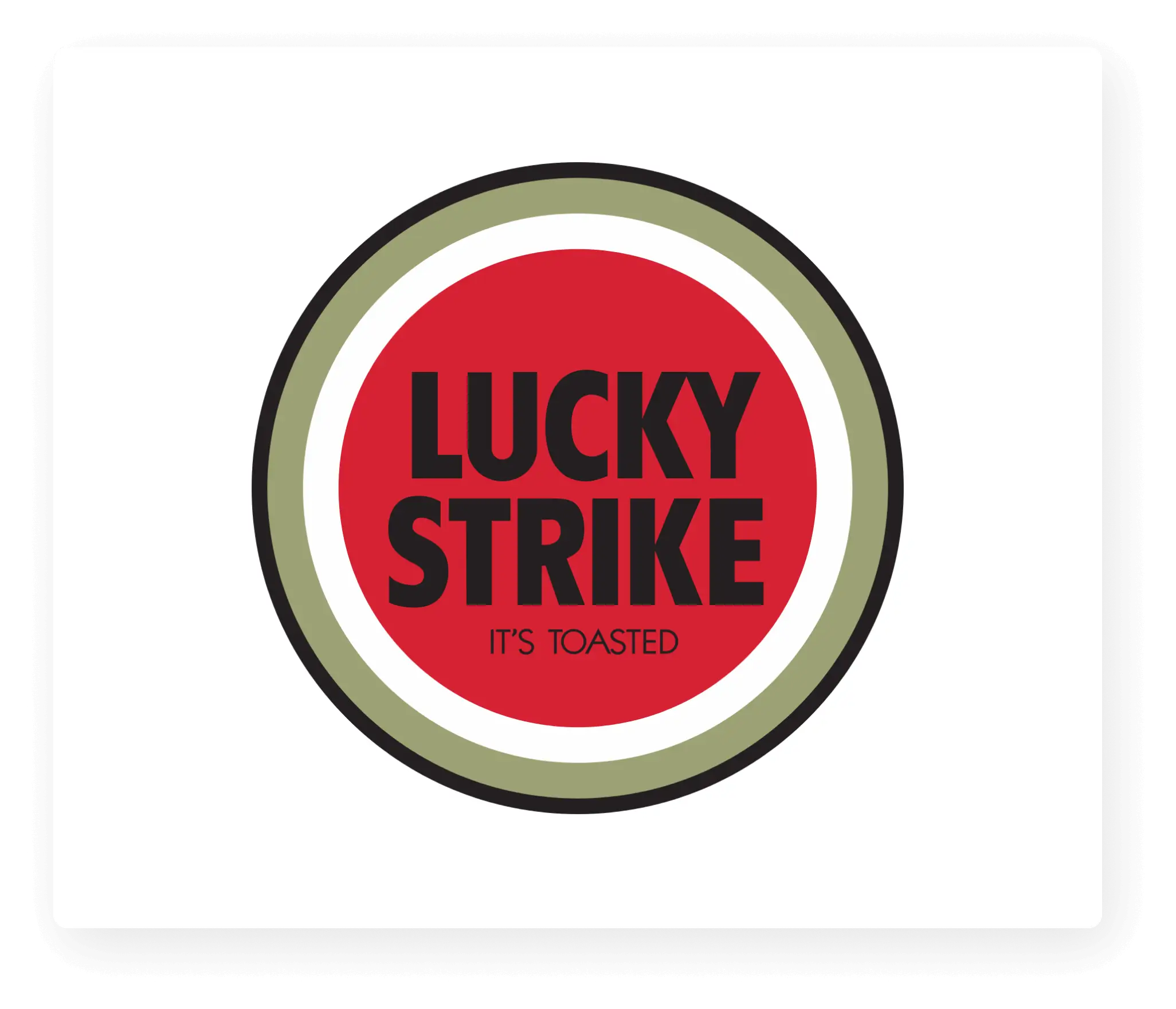Think about the last time you went to the grocery store. When it came time to buy the items on your list, how did you decide what to buy? There are a ton of choices in the paper towel aisle, for example. And one bottle of dish soap isn’t all that different from any other bottle of dish soap. However, I’m willing to bet you reach for Brawny paper towels or Dawn dish soap over the alternatives. Why? That’s the power of a strong brand.
Private sector companies such as Georgia-Pacific (the maker of Brawny) and Proctor & Gamble (the maker of Dawn) understand this. Businesses routinely put a lot of money into developing and promoting brand-name products because this kind of branding lets products stand out from their competitors—even when it’s something as ordinary as paper towels.
Let’s back up a second and ask the most basic question: How do you define branding? Simply put, your brand is the culmination of all of the unique attributes that define who you are. Things like your logo are obvious parts of your brand. But your brand also lives in your values, your people, and your stories. It’s why people think of cute baby ducks when they think of Dawn, or customer service when they think of the online shoe retailer Zappos. It’s why people will go with brands that make them feel a certain way, such as Apple or Nike, even though there are cheaper alternatives.
Schools have brands, too. Traditionally, private schools and charter schools have had to market themselves. But with the rise of school choice, public schools now face the same challenges. Building a powerful school brand can do wonders for your community by providing an identity your students, parents, and staff can rally behind. A strong brand can also be vital when it comes time to ask for community support in the form of a bond election or millage extension. So, what constitutes a strong school brand, and how can you build one? Read on to find out.
“Building a powerful school brand can do wonders for your community by providing an identity your students, parents, and staff can rally behind.”
Your tangible school brand
The most obvious aspect of school branding is the stuff you can see.
Elements like logos, colors, and fonts have the ability to help you stand out from the crowd, making you easily identifiable for your audience. When you think of Target, you think of red. If you’re at a car dealership, it’s the Ford logo that makes you want to take their truck off the lot. You know you have a strong visual brand when someone can identify your schools at a glance.
This is something your schools are already familiar with. Your high schools all have distinctive colors on their basketball jerseys, or mascots t-shirts. These basic elements are the building blocks of your school brand.
Logos
Have you ever noticed that whenever a big corporation changes their logo, it’s a newsworthy event? That’s because people get used to these symbols for a brand. If Starbucks replaced their iconic logo, you’d probably do a double-take when the barista hands you a cup of coffee. The same goes for school branding. Your logo should be immediately recognizable in your community.
One way to ensure that’s the case is to use a unique logo. It can be easy to mimic a local professional or collegiate sports team. But remember—you want to represent your school brand, not somebody else’s. You want something that can differentiate you from other local districts, and something your teachers and students can display with pride.
In order to make your logo as versatile as possible, you’ll need to have several variations for any situation. Single color logos, wordmarks, and horizontal lookups are all important to have on hand to use as needed. It’s also important to have these variations in a variety of different file types. Whether printed in a handbook or displayed on your website, you want to make sure your logo looks crisp and sharp regardless of the medium it's featured in.

One of the country’s biggest consumer brands is Tide detergent. While Tide’s famous bullseye logo may be recognizable in stores, it’s not the only thing that makes the company's products stand out. When Tide’s bullseye was first introduced, it was the bold use of orange and blue colors that made the detergent pop, compared to the generic packaging of its competitors.
A strong color set can obviously help your schools stand out. However, it’s important to know what your exact colors are for digital and print use. It’s not enough to know if your blue is a sky blue vs. a navy blue (although that is helpful). You need to know your exact color values in CMYK (digital) and HEX (print) format. That way, you can assure that your colors are always consistent. Also keep in mind ADA compliance. People who are colorblind or otherwise visually impaired can have difficulty making out certain color combinations when there is poor contrast between them.
Fonts
Fonts are another way your school brand can visually distinguish itself from others. You want all of your content, whether it’s a printed parent newsletter or a news story posted on your website, to have the same look and feel. That familiarity builds trust.
You’ll need to define several different fonts, such as a display font and a body font, for separate use cases. Starbucks, for example, uses Sodo Sans for body copy and Pike for headings. Big private sector brands will sometimes pay to develop a unique font—but that isn’t necessary. There are plenty of free to use fonts that you can embrace as part of your brand (we recommend Google Fonts as one place to look). Whatever you choose, just be consistent in how you use it.

Your intangible school brand
While logos and color schemes are important aspects for branding your school, they’re only half the story. The intangible aspects of your brand identity are just as important. Your brand isn’t two-dimensional, after all. It doesn’t live on a page; it’s alive through your people and the experiences they create for others.
Your school brand also exists in your values—and how you talk about them. Elements like taglines or mission statements offer your district a chance to highlight your differentiation point and your core message. These are elements that you want people to think about every time they interact with your schools.
“Your brand isn’t two-dimensional, after all. It doesn’t live on a page; it’s alive through your people and the experiences they create for others.”
Differentiation point
School branding starts with your differentiation points. Like it sounds, this is about how you’re different; how you stand out from the crowd—and your competition. This can be your arts program, your award-winning cheerleading squad, your career and technical opportunities, etc. This is the thing that you lean into as you talk about yourself and what you center your brand around.
Of course, you may be wondering: What if we don’t have anything special? What if there’s no specific thing that stands out for your schools? If you feel that way, you’re not alone. There’s very rarely something you’re doing that’s never been done before, or that no one is doing right now. And that’s ok! Great ideas should spread from school to school. But what does that mean for your brand?
There’s a classic episode of the drama series Mad Men that touches on this. On the show, advertiser Don Draper is talking to a group of tobacco executives about finding their differentiation point. The point of their tobacco being toasted comes up—and Draper says that’s what they should promote. The executives object, saying that all of their competitors toast their tobacco as well. Draper says that doesn’t matter—all that matters is that it’s true for them, and that if they talk about it first, the consumer will identify that attribute with their company instead of their competitors. The same can be true for you and your schools. Maybe what you’re doing isn’t all that unique in your area, but the way you talk about it can be.
Core message
While the characters in Mad Men are fictional, the tobacco company storyline was based on a real-world example: the American Tobacco Company’s Lucky Strike cigarettes and their slogan “It’s toasted.” A slogan is just a very distilled version of a brand’s core message. The core message is how you take your differentiation point—what makes your school brand special—and share it with the world.

Simply put, your core message is how you talk about yourself. Florida’s Putnam County Schools has created a portrait of a graduate to discuss the skills and competencies they expect for their high school graduates. However, their tagline distills everything down into a simple message: Shaping the Future. When Putnam talks about the new school buildings they’re constructing or the hard work of their students, it all comes back to how their schools are shaping the future for students and their community. The district never misses a chance to incorporate their core message in press releases or on social media. The result is that “shaping the future” has become synonymous with their school brand.
Hospitality
Your brand isn’t just about talking the talk. You also have to walk the walk. Every interaction you and other school leaders—and your employees—have with parents or community members are touchpoints for your district brand. These are opportunities to shape how people think or feel about your schools.
The simple truth is that people may not remember all the details of an interaction, but they will remember how you make them feel. The titular Stew of Stew Leonard’s supermarket chain found this out the hard way early in his career. A customer accused him of selling her sour eggnog, which he flatly denied. After getting a refund, the customer exclaimed that they would never be shopping at his store again. Stew told his wife about the incident when he got home, expecting sympathy. Instead, she took the customer’s side—Stew didn’t listen to her.
Another entrepreneur, Dany Meyer of Shake Shack fame, has written about the importance of hospitality to his business’ brand. He defines customer service as being about what you do, while hospitality is how you do it. Simply put, it’s how you treat people. Do your schools go above and beyond?
The online shoe retailer Zappos is famous for this. Here’s an example. A caller in their customer service line needed to exchange a pair boots for an event the next day. The support rep who took her call knew it was a Friday and that Zappos didn’t offer Saturday shipping, but he followed his training and sought to learn more about the customer. She explained that the shoes were for her son’s memorial service, but the ones she had were the wrong color, which mattered a great deal to her. What the rep did was an act of hospitality—he ordered the correct shoes from a competitor and had them shipped to her first thing the next day, free of charge.
A simple act of kindness does wonders for someone, and people remember how they’re treated. It’s moments like these that have built up Zappos’ reputation over the years as a beloved shoe brand. You can create a similar culture of hospitality in your schools, building up your brand along the way.
Lancaster ISD superintendent Dr. Katrise Perera knows the importance of this. When she was superintendent in Oregon’s Gresham-Barlow school district, she went undercover as a prospective new parent to visit schools. She wanted to get a sense of how front office staff treated visitors, knowing that one bad interaction could turn a parent against the district. Not satisfied with what she found, Perera provided professional development to these employees centered around providing hospitality—and changed what the district looked for in potential candidates for these roles. When your staff is in a position to make a positive impression on parents, and feels empowered to go the extra mile to do the right thing for students, people notice. That helps build your brand.
Three things to keep in mind with school branding
Now that you have the basic school branding building blocks in hand, it’s time to launch your brand out into the world. In order to do that, you need to keep a few things in mind.
Quality
In the world of advertising, promoting brands is serious business. Every aspect of a commercial or ad in a print magazine goes through countless rounds of edits. If you’re going to put yourself out there, you may as well look good. Nobody’s perfect, obviously, but maintaining a certain standard of quality is huge when it comes to promoting and protecting your school brand.
A poorly cropped logo or a typo-heavy parent newsletter can put a serious damper on your district brand, and undermine the great work you’re otherwise trying to share. That's why it’s important to have high-quality assets in hand.
High-quality photography and video can go a long way, for example, and can help your schools come across more polished and professional online. We mentioned the importance of a variety of district logo files earlier, but it’s worth repeating that you’ll want to ensure that your logo never looks distorted or blurry on any of your marketing material. In branding, first impressions are everything.
Consistency
You’ll want to ensure that your district is uniformly presenting the same brand across all platforms. Having one logo on Facebook and another logo on Instagram, for example, can cause confusion. It’s also a good idea to limit the number of core hashtags that you use, if any, to two or three. If every social post is referencing a different theme or message, you’re probably not getting your overarching messaging across.
Think of Amazon. Their iconic smile/arrow logo makes you think of Amazon every time you see it—which is why they place it everywhere. Brand consistency ensures that everything you do harkens back to the larger story you’re trying to tell. Don’t worry about overdoing it—you want to establish familiarity with your school branding. When people see your logo or hear your tagline, you want them to think of you.

Consistency is vitally important for all aspects of your visual brand. One way to ensure consistency is through a defined set of brand identity guidelines. A brand identity book contains the visual components of your brand, including your school logo variations, color palette, fonts, and more. This is your reference point to keep everyone throughout your district on the same page when working with any brand assets for either internal or external audiences.
“In branding, first impressions are everything.”
Repetition
Businesses build relationships with their customers through repeated brand impressions over time. One ad for a new car might catch people’s attention, but it’s only through repeated exposure that you build intrigue and ultimately receive buy-in. You should approach your district brand the same way.
Traditional advertising methods, like billboards, are a great example of repetition. If you regularly pass the same billboard advertising a local dentist in your neighborhood, when it comes time to get your teeth cleaned, you’ll probably think about that dentist. Why? Because you’ve seen their face every day on your drive home from work. That’s the power of repetition.
Richland School District Two in South Carolina understands this. Their website and social media channels never pass up the opportunity to tie things back to the word “premier” through their hashtag #PremierStartsHere and #PremierSTARS. Taken from their vision statement, the district is constantly using the word to describe the educational opportunities their schools offer students. It may seem like you're overdoing it, but repeating yourself over and over again reinforces your brand. If you have a solid foundation, it’s easy to tie everything you do back to who you are as a school system.

School branding vs
district branding
It can be tricky for districts to get everyone on the same page. If you have several campuses, there can be a host of different identities that various members of your community feel an attachment toward. People may feel strongly about their child’s high school or their own alma mater, for example, but less so about the district as a whole.
On the flip side, with a ton of school employees across multiple campuses, it can sometimes be hard to maintain consistency with your brand. That’s where having a system in place comes in handy. It ensures your entire district is able to stay true to the great brand you’ve invested in building.
Competition between schools
It’s natural for there to be a bit of a rivalry between schools in your district. A little healthy competition can actually push all of your schools forward. But at the end of the day, how do you keep your overall district brand from getting lost in the shuffle?
Texas’ Garland ISD addresses this in a fun and unique way. Their beginning of the year convocation brings together teachers and staff from their entire district. Each campus is encouraged to show off their school pride. Matching t-shirts, highschool drumlines, and homemade posters all lend to a festive atmosphere that feels like a celebration of all that makes Garland ISD special. Like Garland ISD, you want to encourage each of your campuses to embrace their identities, but at the end of the day you want to reinforce that everyone is part of the same school community. It takes everyone to unite your schools into one community.
Read Competing With Yourself: Managing intradistrict competition among your schools
System-wide understanding
Many schools only have one or two people on staff to act as the point persons for communication. How can you make sure everyone feels equipped and empowered to represent the district while staying true to their school brand? It doesn’t happen by accident. It takes intentional action.
That doesn’t mean you need some sophisticated system, however. Enumclaw School District in Washington created a Google Drive where all district-wide communications and brand information live. This hub simplifies things for campus staff, allowing them to know exactly where to go to find official logos and graphics. Solving for confusion and brand inconsistency may take some organization up front, but your district will be grateful for the resource.
Read Creating Consistency: A conversation with communications professionals
Getting your school brand out into the community
After establishing the building blocks for branding your school, the next step is to actively build upon it each and every day. Luckily for school leaders, this isn’t on any one person’s shoulders; building a strong brand is everyone’s job.
Advocates
Some of your biggest brand advocates are the people in your community—the parents and volunteers who see your schools up close each and every day. By advocates, we mean people who tell positive stories about your schools. They’re the ones who will defend your brand if there are misconceptions floating around, and proactively talk about the great things going on in your classrooms.
It may seem like advocates just “happen” at random, but you can cultivate your advocates over time. Through personal, intentional moments with your stakeholders, you can start to build strong bonds with others. In West Feliciana Parish Schools, Superintendent Hollis Milton accomplishes this via the simple act of writing letters to students, families, faculty, and staff. It could be to celebrate a student’s accomplishment or to recognize the effort of a staff member. Regardless of the occasion, Milton writes about 50 letters per week. It all starts with listening and engaging with your community. Milton lets the experiences he has in a given week inform who he writes a note to. Such a simple action on his part can mean the world to an employee having a rough time or a parent filled with pride in their student.
“Building a strong brand is everyone’s job.”
Brand ambassadors
Your employees live your brand day in and day out. The teachers and staff in your schools should be your ideal brand ambassadors—the ones who are your voice when you’re not around. These are the folks who don’t just wear your values on their sleeves—they actively promote the good things you’re doing to their friends and neighbors. Ambassadors can be a huge boon to your school brand, but do your employees actually feel empowered to act as such?
In a recent SchoolCEO survey, we found that many school employees want to proactively promote their districts. However, only one in five teachers and only about a third of staff members have received any training on branding. That leads to employees who aren’t familiar with important touch points such as their district’s mission statement or values. If your employees don’t feel confident talking about these things, how can you expect anyone else in your school community to know your brand?


The power of a strong
school brand
The best brands speak to an identity that everyone—from employees to perfect strangers—can relate to and get behind. In your school community, this means crafting a brand that goes beyond internal staff meetings and connects with your parents and students. A perfect example can be found in Bibb County, Georgia. Their mission as a district is encapsulated in the phrase Victory in Progress or VIP. Their former superintendent Dr. Curtis Jones once shared with SchoolCEO that he’d seen their brand resonate with even the district’s youngest students: “When we started passing out our VIP pins to our teachers, I had a third-grade student ask me, ‘Are you a VIP?’ and I said ‘Well, I guess I am.’ He looked at his friend and said, ‘He’s a VIP!’ and then looked back at me and said, ‘How do you get to be a VIP?’”
When everyone in your schools is able to see themselves in the brand and speak to that identity, you know you’re onto something. With a solid foundation, you can build a powerful district brand. Why not start today?
Read more Apptegy resources
The What and Why of School Websites
We analyzed 700 homepages to see what they include—and what’s missing.
How do you empower your staff to be strong brand advocates? Four school leaders reveal their secrets to success.
It can be easy to focus your time and energy on your schools’ detractors…but is that the right approach? We’ll explain how you can cultivate your advocates—and let them be your brand advocates when you’re not around.
It’s human nature to love a good story. How can you use the building blocks of storytelling to create a compelling narrative around your schools? We’ve got some tips.